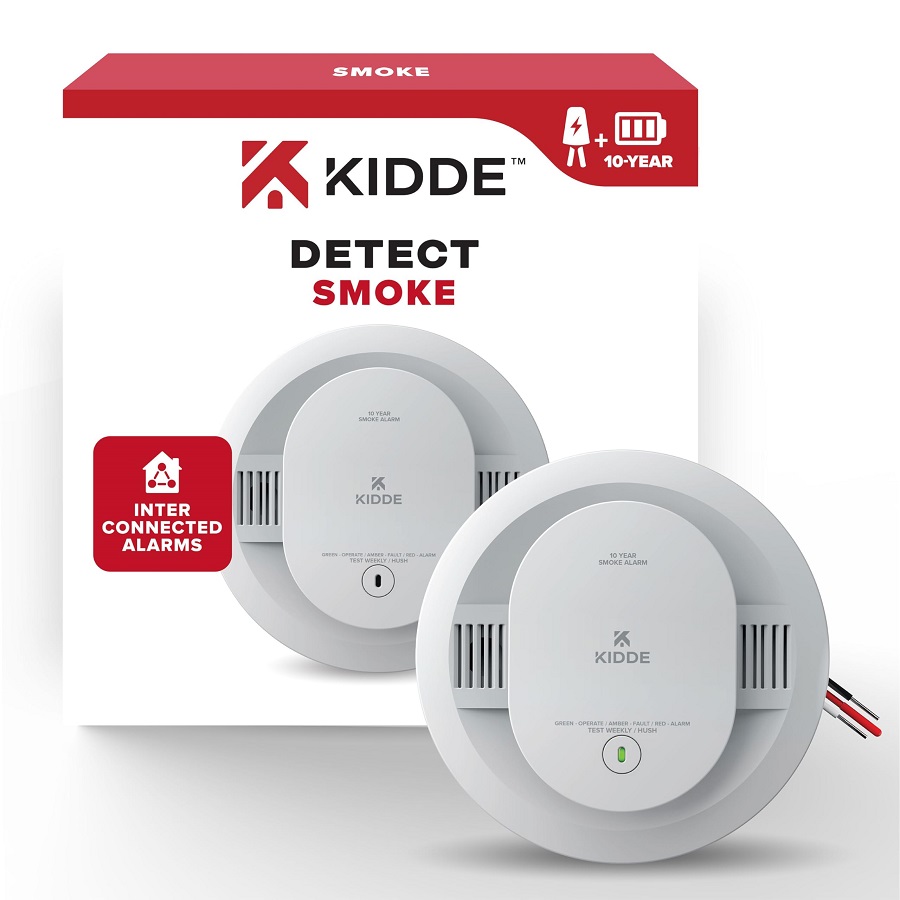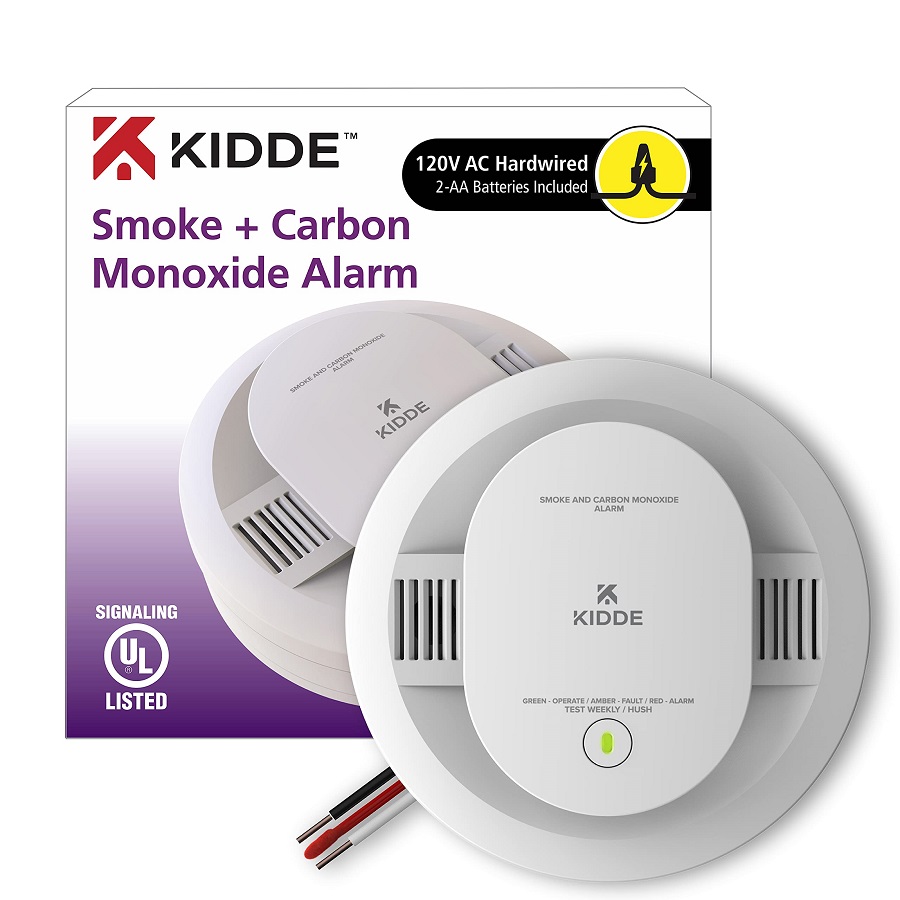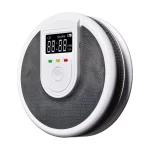Understanding Smoke Detector Types
Smoke alarm come in two main types: standalone and hardwired. Knowing which type you have is key before attempting any fixes. Each operates differently and needs specific steps to turn off during false alarms.
Standalone (Battery-Powered) Smoke Detectors
Standalone detectors are powered by batteries. They are easy to install and move around. When they chirp, it usually means the batteries need changing. Press the ‘Test/Hush’ button to silence them briefly. If it keeps beeping, replace the batteries following the manufacturer’s instructions.
Hardwired Smoke Detectors
Hardwired detectors are connected to your home’s power system. These have backup batteries for power outages. To stop them from beeping, turn off the circuit breaker. Remove the detector to replace batteries or press the silence button if it’s a false alarm. Always check the manual for specific steps for your model.

Common Reasons for Smoke Detector False Alarms
Smoke detectors are crucial for home safety, but sometimes they go off without a fire. Understanding why can help you fix the issue swiftly.
Environmental Influencers and False Triggers
Several environmental factors can set off your smoke detector. High humidity, steam from a bathroom or kitchen, dust in the air, or even temperature shifts can cause false alarms. Make sure your detectors are not too close to bathrooms, kitchens, or vents to prevent these issues.
Battery Issues and Replacement Needs
A common cause for a smoke detector’s beeping is a low battery. Most detectors will chirp to warn you that the battery is dying. Replace batteries regularly, and use the brand recommended by the detector’s manufacturer for best results. Remember, incorrect battery installation can also lead to beeping.
Dust, Debris, and Insect Interference
Dust and debris accumulation inside your smoke detector can cause it to chirp. Regular cleaning with a vacuum or a gentle brush can prevent this. Insects crawling into the detector can also set it off, so ensure the cover is always secure.
Step-by-Step Guide to Turning Off a Smoke Detector
Encountering a continuous beep from your smoke detector without the presence of smoke can be unsettling. It’s crucial to know the correct steps to silence the alarm, whether you have a standalone or hardwired unit. Here’s a simplified guide that will help you turn off your smoke detector promptly and safely.
Disabling Standalone Smoke Detectors
For battery-powered (standalone) smoke detectors, the following steps should silence the nuisance beeps:
- Locate the ‘Test/Hush’ button, usually found on the device’s surface.
- Press and hold the button until the beeping stops – this could take up to 15 seconds.
- If the beep continues, remove the unit from its mounting bracket.
- Open the battery compartment and take out the batteries.
- Press the ‘Test/Hush’ button again without the batteries, holding for 20 seconds.
- Install fresh batteries, and return the unit to its bracket.
- The detector should emit a brief chirp, signalling it’s back to normal operation.
Handling Hardwired Smoke Alarms
If you have a hardwired smoke alarm, you need to be careful not to disrupt your household’s electricity. Follow these steps to turn off the alarm:
- Switch off the circuit breaker that supplies power to the smoke detector.
- Detach the smoke alarm from its mounting and disconnect any power cables.
- Remove the backup batteries found within the unit.
- Hold the ‘Test/Hush’ button for about 20 seconds – the beeping should cease.
- Once all sounds stop, put in new batteries and reconnect the power cables.
- Attach the smoke alarm back to its bracket and restore the circuit breaker.
- The alarm will likely make a short chirp, confirming a successful reset.
By following these straightforward steps, you can rapidly address beeping issues in both standalone and hardwired smoke detectors. These guidelines offer clarity on how to turn off hard-wired smoke alarms effectively, ensuring peace and safety in your home.

Testing and Silencing Features of Smoke Detectors
Smoke detectors are fitted with features to test or silence alarms. These are vital for handling false alerts and ensuring the device works.
Utilizing the ‘Test/Hush’ Button
Most smoke detectors come with a ‘Test/Hush’ button. Use it to check the alarm. You can also silence false beeps with it. To test, press the button briefly; it should beep loudly if it’s working. To hush, press the same button during a false alarm; the device should quiet down. If it doesn’t, you may have to follow more involved steps. Such as power off and battery removal.
Interpreting Alarm Sounds and Indicator Lights
Smoke detectors make different sounds and show varied lights for alerts. A continuous loud beep often means there’s actual smoke. A single chirp may signal battery issues or a need for maintenance. Watch the indicator lights too. A flashing red light usually points to an active alarm. A green one indicates the detector is powered and working. Know what each signal on your model means to respond correctly.
Using these features correctly helps you manage your smoke detector and respond to potential dangers promptly. Regular tests and understanding your alarm’s signals are key parts of home safety.
Long-Term Solutions for Smoke Alarm Sensitivity
To prevent frequent false alarms, long-term measures are vital. Below you’ll find strategies for lessening your smoke detector’s sensitivity over time.
Regular Maintenance and Cleaning
Keep your smoke detectors clean. Dirt, dust, and insects can set off unwanted alarms. Follow these steps regularly:
- Turn off power to hard-wired units.
- Use a vacuum hose to remove dust from the unit’s exterior and sensors.
- Gently wipe the outside with a dry cloth.
- Check and replace batteries as needed for all types, ideally every six months.
- Test the smoke alarm using the ‘Test/Hush’ button after maintenance.
By conducting these maintenance tasks, you can ensure your smoke alarm functions correctly and reduces false alerts.
Proper Placement and Installation Tips
Where you install smoke detectors has a big impact. Here’s how to place them correctly:
- Avoid locations near kitchens, bathrooms, windows, and vents to prevent false alarms from steam and drafts.
- Place smoke detectors on ceilings in the middle of a room, or on walls at least 12 inches from the ceiling.
- Follow the manufacturer’s guidelines for distance between detectors if your home requires multiple units.
- Ensure hard-wired smoke alarms are correctly connected to your home’s electrical system.
- Consult with professionals if unsure about the installation process.
Proper placement and correct installation play a critical role in the effectiveness of your smoke detectors, helping to minimize unnecessary sensitivity and reduce false triggers. Use these tips to establish a safe and reliable fire detection system in your home.

When to Replace Your Smoke Detector
Smoke detectors are critical safety devices that don’t last forever. It’s important to know when to replace them to maintain home safety.
Identifying Expiration and Malfunction Signs
Check your smoke detector’s expiration date; most need replacement every 10 years. Look for warning signals that it’s failing. If it beeps erratically or doesn’t beep during tests, it’s likely time for a new one. Replace your smoke detector promptly if it shows these signs.
Dealing with Persistent Issues
When faced with ongoing issues with your smoke detector, further action may be necessary.
Troubleshooting Techniques for Chronic False Alarms
Experiencing frequent false alarms can be frustrating and may require a methodical approach to identify the root cause. To troubleshoot effectively, consider the following:
- Review the installation location; it might be prone to environmental triggers like steam or drafts.
- Inspect the detector for any accumulated dust or insects, and clean accordingly.
- Confirm the battery type and installation; mismatched or improperly seated batteries often cause issues.
- Evaluate the age of the detector; devices near or past their expiry may malfunction.
- Test the unit’s functions after performing any maintenance or adjustments.
If these steps don’t resolve the persistent beeping, a more in-depth evaluation may be necessary which could indicate the need for professional assistance.
Contacting Professionals for Advanced Problems
When basic troubleshooting doesn’t clear up the problem, reaching out to a professional is the next step. Here’s how to proceed:
- Contact the manufacturer; they offer guidance specific to your smoke detector model.
- Seek help from a certified electrician, especially for hardwired systems.
- Consider hiring a home safety expert to review your entire fire alarm system.
Taking these measures should help ensure that your smoke alarm system is functioning correctly and is up to date with safety standards. Remember, the key goal is to ensure the safety and peace of smoke alarm operation within your home.


